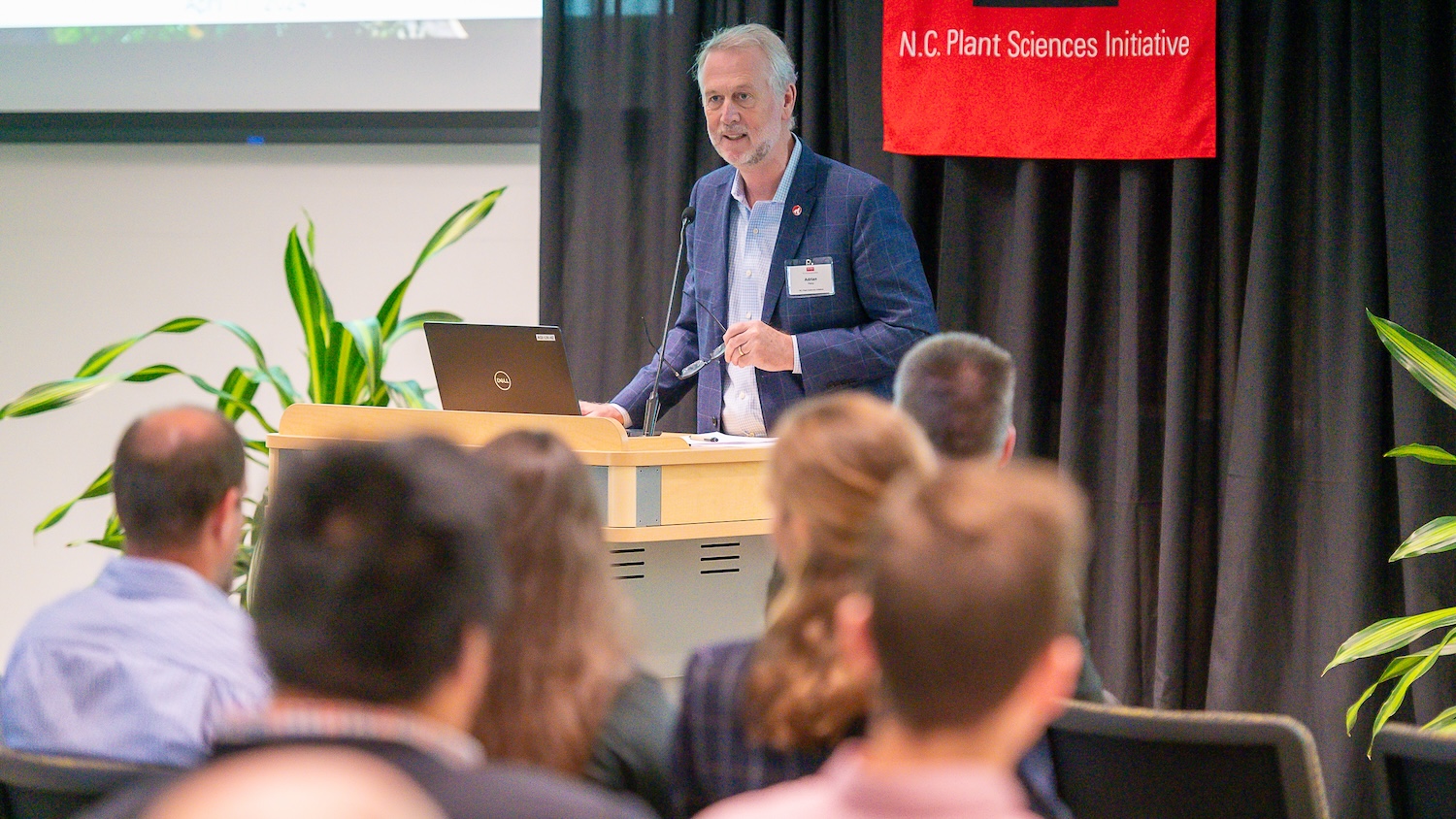Solving molecular mysteries
Over the years he’s spent studying cassava mosaic disease, Tanzanian scientist Dr. Joseph Ndunguru has noted something curious: Wherever there are DNA molecules called satellites associated with the geminiviruses contributing to the disease, symptoms are greater and losses are heavier – even in plants bred specifically to resist the disease.
Figuring out more about those subviral particles could be key, Ndunguru believes, to developing a strategy to beat the disease for good. That’s why he has teamed with CALS’ Dr. Linda Hanley-Bowdoin on a project designed to yield the scientific insight necessary to do just that.
The project recently won a three-year grant from the Basic Research to Enable Agricultural Development program. Supported by the National Science Foundation and the Bill and Melinda Gates Foundation, the program funds collaborative work to generate sustainable, science-based solutions to agricultural problems in developing countries.
And the problems posed by cassava mosaic disease are significant, explains Hanley-Bowdoin, William Neal Reynolds Distinguished Professor of Molecular and Structural Biochemistry, Genetics and Plant Biology.
“Cassava is the No. 3 source of calories in Africa after maize and rice,” she says. “Also, cassava will grow under a variety of less-than-ideal conditions – and a lot of African agriculture is on the margins, as far as the quality of the soil, the high temperatures and the amount of water that’s available – so it gives subsistence farmers and families a source of calories in places where other crops just can’t be produced.”
But there is a drawback: Cassava is highly susceptible to viral diseases, and the disease pressure associated with geminiviruses has been mounting. When Hanley-Bowdoin started studying these DNA viruses in the 1980s, scientists knew about only a handful of species. Today, there are more than 200 species – plus 600 or 700 isolates—affecting all kinds of crops, particularly in tropical countries where the insect vectors, which spread these viruses, are present year-round.
Cassava has been particularly hard hit. In one recent year, farmers in Tanzania, Uganda, Rwanda and Burundi lost 4 million tons of the crop to cassava mosaic disease.
Ndunguru believes that understanding more about the satellites found along with the viruses will be key in developing cassava varieties that will retain long-term resistance to the disease. Viral satellites are not infectious by themselves, but the molecules can enhance plant disease – and thus result in greater crop loss – when they act in the presence of viruses.
It was Ndunguru, a scientist with the Mikocheni Agricultural Research Institute in Dar es Salaam, who first identified geminivirus satellites in cassava mosaic disease. Since then, he’s had several questions about the satellites that he couldn’t answer.
“The questions,” he says, “needed someone like Linda to help in figuring them out.”
The geminivirus satellites in African cassava piqued Hanley-Bowdoin’s curiosity because they are unlike geminivirus satellites seen in other crops and in other places. Scientists have found that some of the satellites work by turning off the genes in plants that defend against the virus, but that doesn’t appear to be the case with the satellites associated with cassava mosaic disease, she says.
“We do not know what these satellites do,” Hanley-Bowdoin says. “The project focuses on figuring out how they work: How are they replicated? What product do they make that enhances disease? And how are they transmitted?
“We need that information in order to start to devise strategies to combat geminivirus disease in the presence of these satellites.”
As part of the grant-funded project, Hanley-Bowdoin and her colleagues at N.C. State will be making genetic variations of the satellites and testing them in the model plant Arabidopsis. What happens as a result should give the researchers clues as to how the satellites work.
“The model work will go quickly, and what it will allow us to do is rule out some possibilities and to focus the cassava research, which will be done in Africa, on what we think is most likely going on,” Hanley-Bowdoin adds.
Ndunguru will not only be testing the variants in cassava, he will also be looking along with fellow African scientist Peter Sseruwagi at how the satellites are transmitted – whether through the plant genome or the white fly vector.
Knowing these things will ultimately help plant breeders develop varieties that are useful for the long haul, Ndunguru says.
“The project,” he says, “will generate information that will help us to understand the virus-satellite interaction, to understand mechanisms of disease development in cassava and … to form a base on which to formulate effective and sustainable disease control measures.”

And that, he adds, will likely “have a huge impact to the cassava farmers and scientists at large.”
While the project’s benefit to African agriculture is obvious, the benefit to the United States is less direct – but perhaps no less important. While geminivirus diseases don’t cause many problems in North America today, that doesn’t mean they won’t. So the work Hanley-Bowdoin is doing now could possibly be applied here in years to come.
Furthermore, she says, addressing global food security issues is an important defense issue. After all, famine leads frequently to unrest and sometimes to war.
“My personal philosophy is we can invest in helping people produce enough food for themselves so they can stay healthy, or we can invest in defense,” she says. “And I’d much rather be involved in the former.”
-Dee Shore


